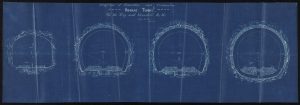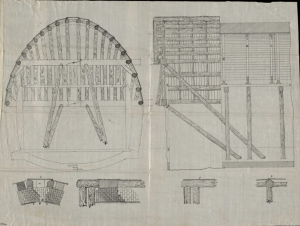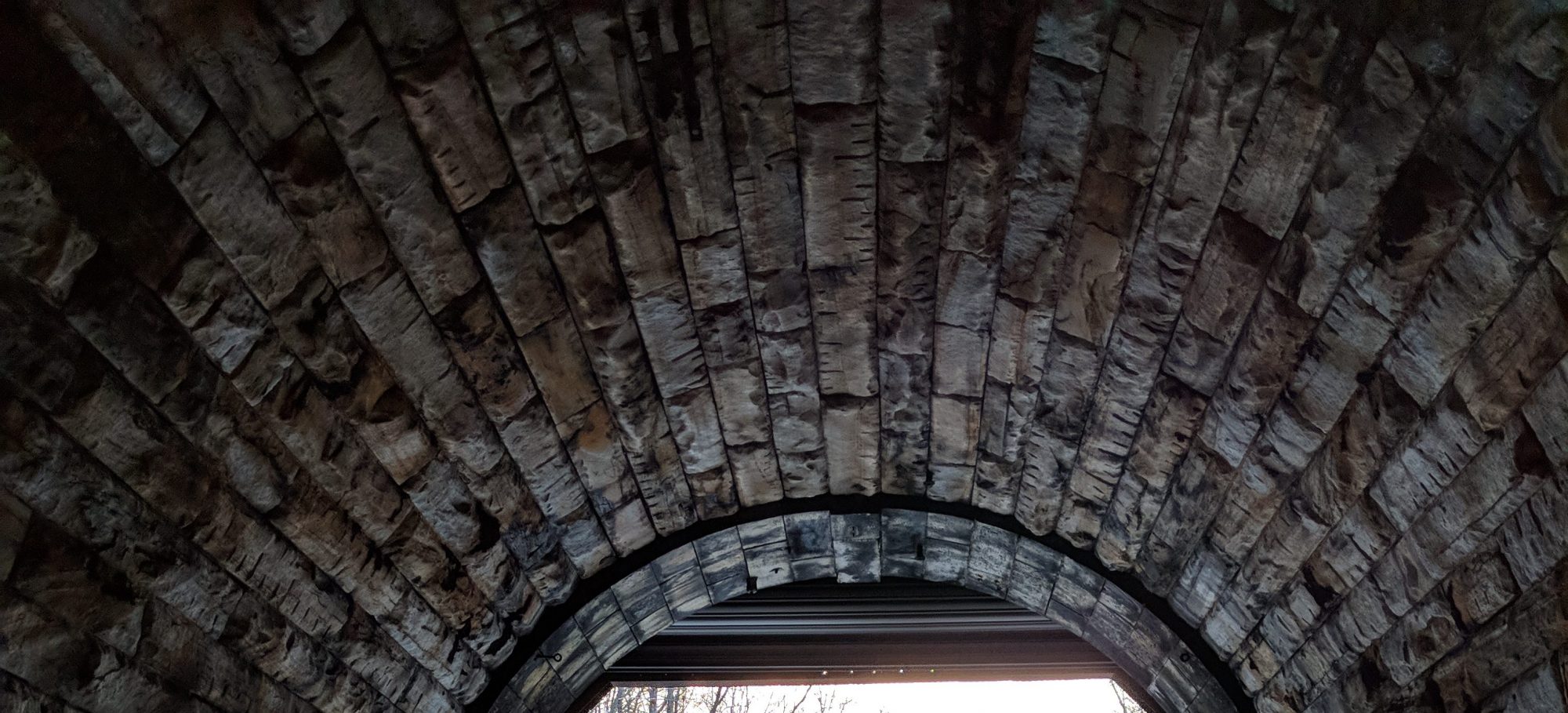Where is the West Portal?
The West Portal is located in North Adams, Massachusetts, somewhere beside one of the many cemeteries in the town, and somewhere between Walmart and Massachusetts College of Liberal Arts. The road that leads up to the tunnel is a perpetually muddy dirt path, complete with a yellow gate that is never closed. There is a severe lack of “No Trespassing” signs at this location, which only makes sense due to the extremely hidden nature of the location itself – why add signs if no one can even find the place?
The West Portal was originally a bustling metropolis amongst the city of North Adams. The forests around the tunnel are still fairly young, having existed only after construction ceased in the late 1800s. Prior to this, the location held many other buildings, such as various mills, worker housing, and other buildings like the power house. These buildings today are lackluster – falling apart and becoming once again part of the nature surrounding it.
How was it constructed?
By all accounts, the West Portal was incredibly difficult to create. Nearly every aspect of this entrance caused a tremendously large amount of extra work for the miners. When only 260ft was excavated from the West Portal, soft rock was discovered that made it impossible to continue work at the original pace they had maintained. With three months of work destroyed, and the inconvenience of a minor flood and halt in work to construct an additional shaft to redirect and remove the water, the process of excavating the West Portal was challenging and burdensome.
Flood water had not been on the radar at the start of construction. During the original town meetings discussing the tunnel, John Hayward and James Baldwin were asked to give a testimony about the cost of the tunnel. They both had surveyed a nearby railroad which lead from Boston to the Hudson River. In giving his testimony, Hayward said, “I think there would be no trouble with water in the Hoosac Tunnel.” Whoops.
On the opposite end, William Swift, president of the Western Railroad, was asked to make a statement as well, and described an English tunnel which had millions of gallons of water being pumped out of it everyday. He correctly assumed, “it is pretty evident there will be… more millions of gallons of water, than probably any engineer ever dreamed of.”

The West side of the tunnel was, compared to the East, quite literally falling apart as it was being built. The East could hold itself up without any need for support beams, however the West needed constant support against the crumbling mountain. Herman Haupt, who was in charge of the construction of the West side of the tunnel, in 1857, was confident that they would eventually reach solid rock. Due to constant water saturation, the timber support beams would have trouble keeping up with the construction. This would not be discovered until 10 years after Haupt made the original claim in 1857 – when the Commonwealth of Massachusetts took over and developed a new drainage system. Haupt never drew designs of his timber structures, so when the Commonwealth took over, the drawings that were made then are all we have.

Herman Haupt had been known at the time as being part of President Lincoln’s railroad men, as well as former chief engineer of the Pennsylvania Railroad, and had knowledge of the new technology of steam powered drills.
When you’re done here, why not learn more about the Shafts and other vicinity around the tunnel, by heading over to the Shafts of the Hoosac Tunnel>>
